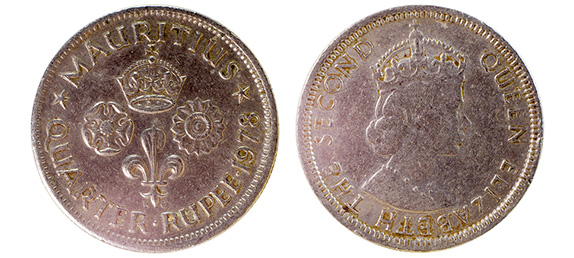
SBC Gold has emphasized the importance of incorporating tangible assets into a diversified financial portfolio. A typical portfolio may have cash, stocks, bonds, mutual funds and real estate, as well as hard tangible assets. We believe the tangible asset part of a portfolio should also be diversified. As part of the hard assets portfolio, we like to include gold and silver coins. Gold coins as a hedge against monetary collapse and US dollar devaluation, silver coins for survival and growth, and US gem quality rare coins for long-term growth. Gem quality rare coins have been one of the best performing non-leveraged products over the last several generations, yet traditional investors often overlook them. This area of the market may not be suitable for short-term investors who trade and monitor their positions daily. But for those willing to hold for the long term and who are seeking an ideal hedge against inflation, gem quality rare coins are an ideal product.
There are several factors to understand relating to the acquisition of rare coins. The most important factors are value, pricing, grading, populations, quality and cyclical timing. Generic numismatic twenty-dollar Double Eagle gold coins are not rare, but do have collectible value. Prices of these coins are mainly determined by the current gold price. A common 1924 twenty-dollar gold Saint-Gaudens in mint state 63 condition might only sell for a fifteen per cent premium above a one-ounce gold American Eagle bullion coin, while a gem example of a 1927D Saint-Gaudens can fetch in excess of a million dollars, as there may only be half a dozen known to exist. So, the most important criteria in the pricing of rare coins is rarity. A very rare coiled hair four-dollar gold Stella just sold for about two and a half million dollars. About fifteen coins were minted in 1880 and very few survived in superb gem condition. Obviously, the vast majority of investors cannot afford this type of rarity. However, there are numerous denominations of gem quality coins which are affordable and which SBC Gold believes are presently undervalued.
Third party grading services such as the Numismatic Guarantee Corp (NGC) and the Professional Coin Grading Service (PCGS) certify and authenticate rare coins and place them in a hermetically sealed, tamper-proof plastic “slab.” Acquisition of certified rare coins gives the consumer and first-time buyer confidence that they are getting properly graded coins. Third party grading levels the playing field among dealers, collectors and consumers. The Certified Acceptance Corp (CAC) will also verify graded coins by placing their green sticker on the slab. Each of these services has a population report, which shows the number of coins graded in each mint state grade. This enables the consumer to identify the rarity of each particular coin.
Gem quality coins are given the grade MS, or mint state 65 or higher. Gem proof coins are designated PR or PF 65. A proof coin is a specimen striking of coinage for exhibition and presentation purposes. It is manufactured differently than a business struck coin, which circulates as money. A proof is struck in limited quantity from a more highly polished die under greater pressure, which gives it a mirror-like appearance. A higher grade of a particular coin translates into a higher priced coin.
Gem quality rare coin prices rose dramatically during the inflationary periods 1970–1974 and 1976–1980. Many analysts today (von Greyerz, Turk, Embry, Sprott) believe we are on the verge of another major inflationary cycle due to intolerable US government debt and liabilities, as well as, the reckless quantitative easing policy of the Federal Reserve. Therefore, SBC Gold believes the timing and volatility are now very favorable in today’s rare coin market.
Some of the more popular issues are the deep mirror proof—like Morgan silver dollars, proof gold and silver type coins and early American coinage. An SBC Gold representative can continue the education process of gem quality US rare coins for anyone interested. SBC Gold has brokered many of the highest quality and finest known rare coins through a network of the country’s largest and best rare coin dealers. We encourage our clients to do their own independent research and will continue to recommend additional sources for study.
Little Treasures, Big Secret
A film, book, painting, or photo may inspire us, but nothing reconnects us to history as powerfully as holding an ancient artifact or coin. For centuries, collectors of art, ceramics, books and coins have made connections to the past. The motivation for some is historical curiosity, while others simply cherish their artistic beauty.
Over the last few decades, I’ve developed a passion that has both connected me to American history and protected my financial future. I’ve been fortunate to acquire proof type silver coins dating back 150 plus years, from the Civil War to the Industrial Revolution.
A “type” coin is any American coin minted between 1793 and 1915 that exhibits a specific design. It may be copper, gold, silver or nickel. A “proof” coin is a specimen struck for exhibition, presentation or numismatic purposes. Proofs are manufactured differently than business strikes. They are made from more highly polished dies and planchets, struck under great pressure for a mirror finish. A “cameo” look is seen when the major device is contrasted against the mirror of the field. Mintages were generally under one thousand for silver proof type coins prior to 1858. Low original mintages guaranteed that only small numbers of these proofs survived in gem quality. Many coins were lost, mishandled, scratched, circulated or melted.
The Seated Liberty series, designed by Christian Gobrecht, was minted between 1837 and 1891. The coins show a Liberty figure proudly holding a flag, and on the reverse, a beautiful eagle is depicted as seen in this Seated Liberty Silver Dollar. Proof type silver coins symbolize our history by using artistry in precious metal. These illusive treasures have been an excellent hedge against inflation for over forty years. Now, investors, as well as connoisseurs are actively seeking them.
What’s So Secret?
The answer is: value, timing and volatility. While millions of investors are blindly buying mutual funds at historic highs, savvy investors are acquiring these little treasures at a fraction of their market highs of 1989. Owning high quality “gem proof” coins near several-decade lows means excellent value for your money. Buying during a quiet phase (before inflation pushes prices higher) means having great upside potential. Back in 1979–80, when inflation was in the double digits, many proof coins more than doubled in value in two years. This volatility can translate into profits quickly. As inflation increases and financial assets decrease, I expect to see new infusions of capital into the thinly capitalized market of proof type coins. This could lead to similar price gains like the one’s witnessed in 1979–1980.
Diversify Your Portfolio
Give us a call to discuss gem quality rare coins and diversifying your tangible asset portfolio.


